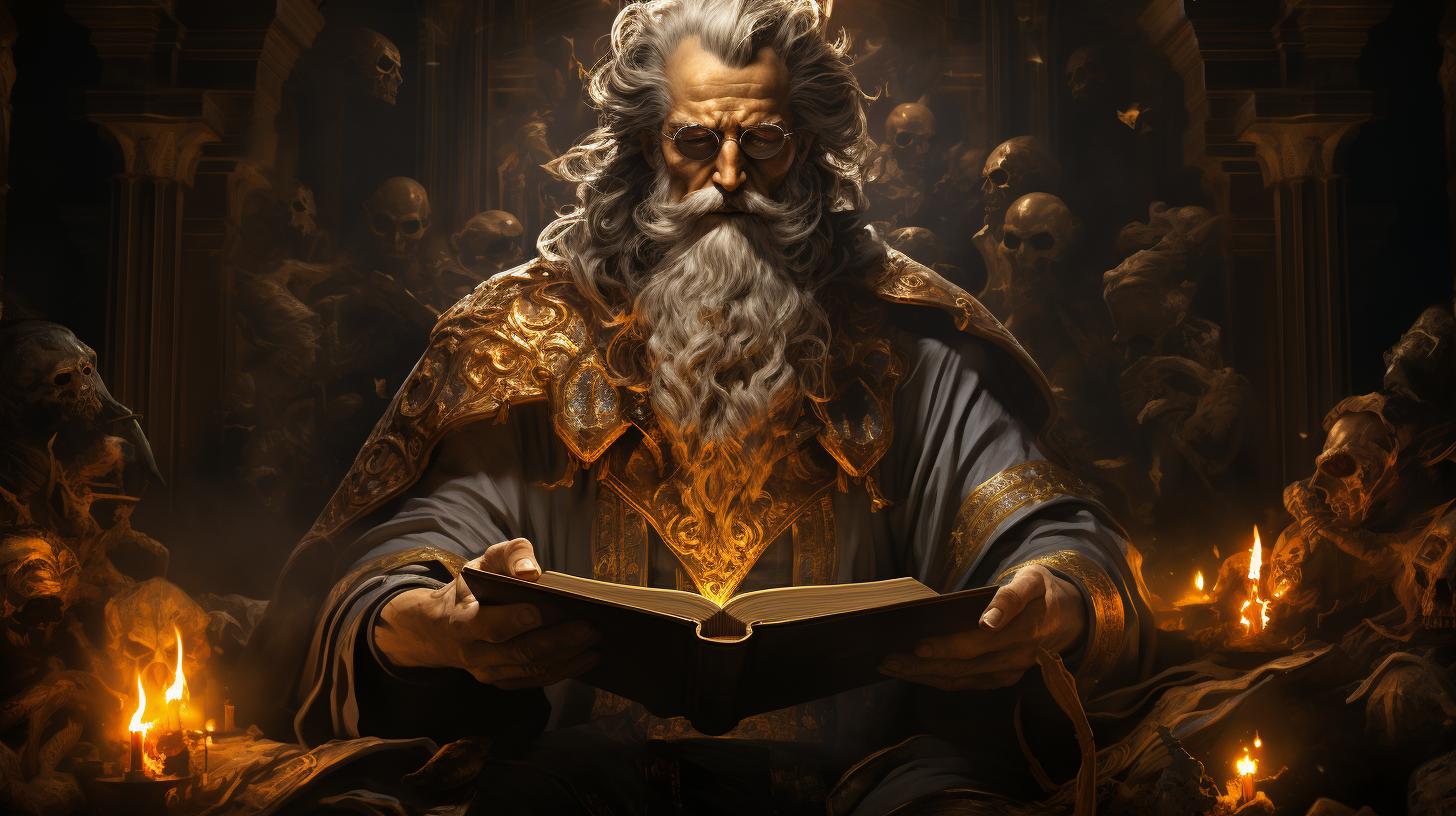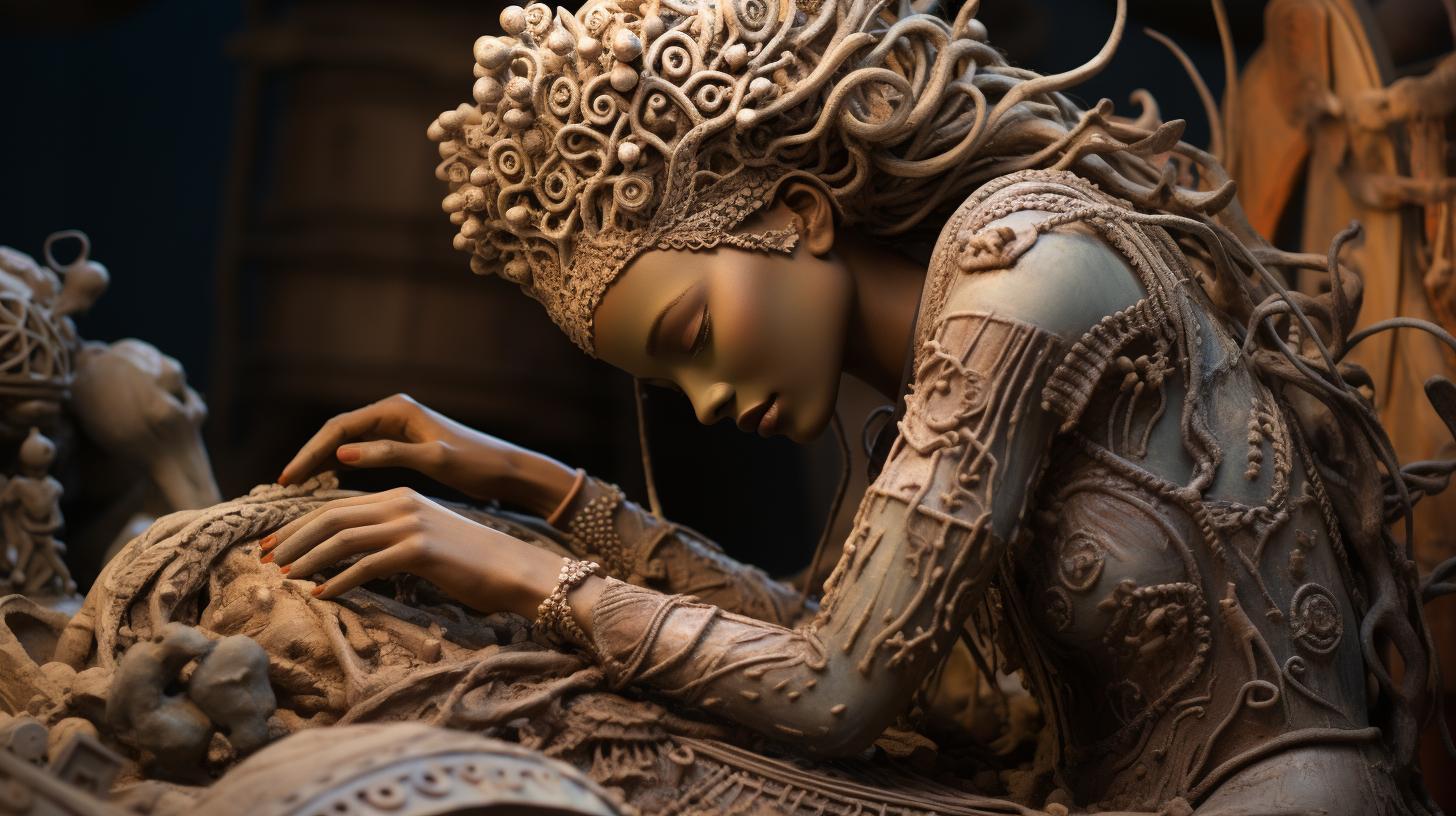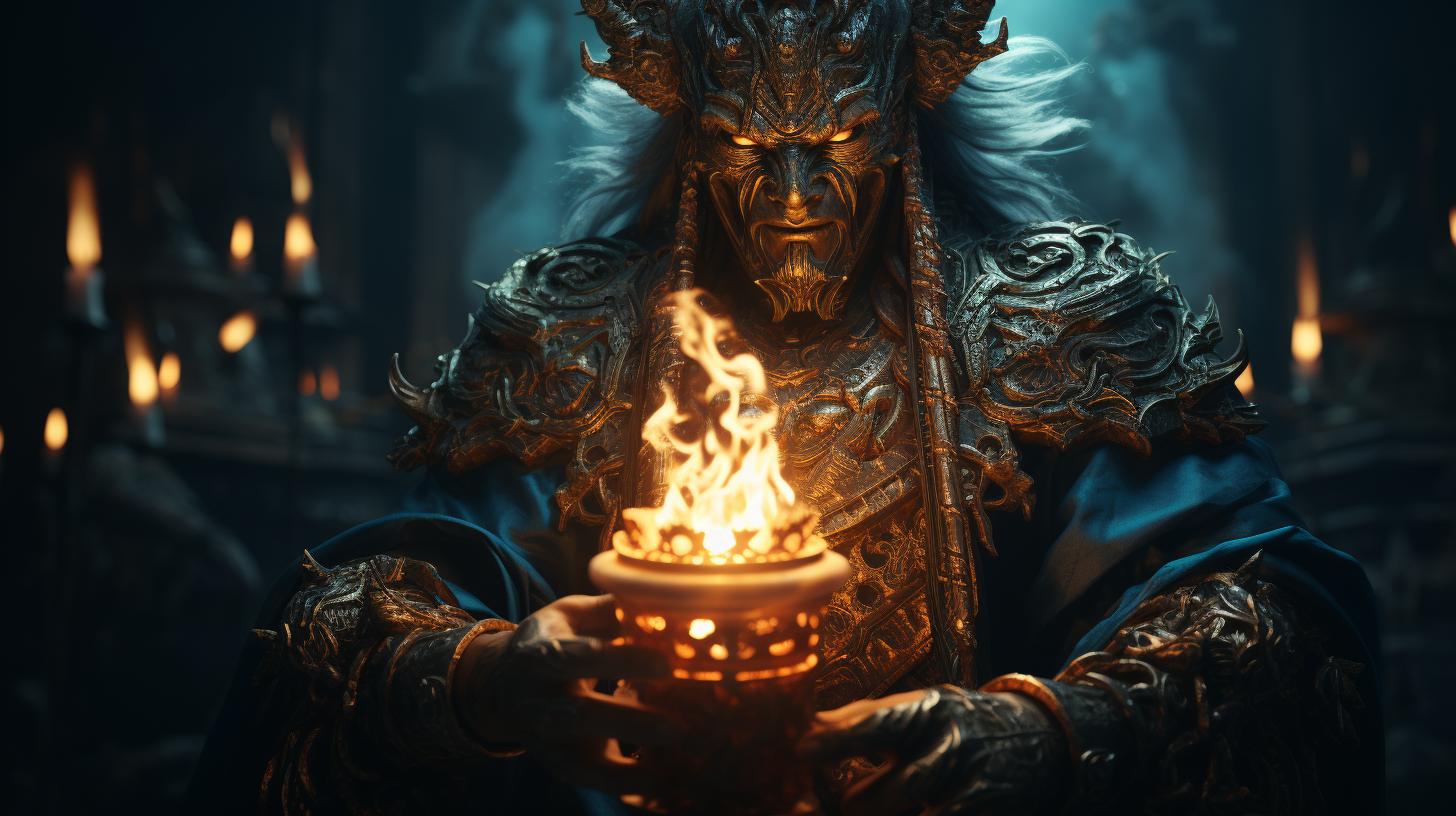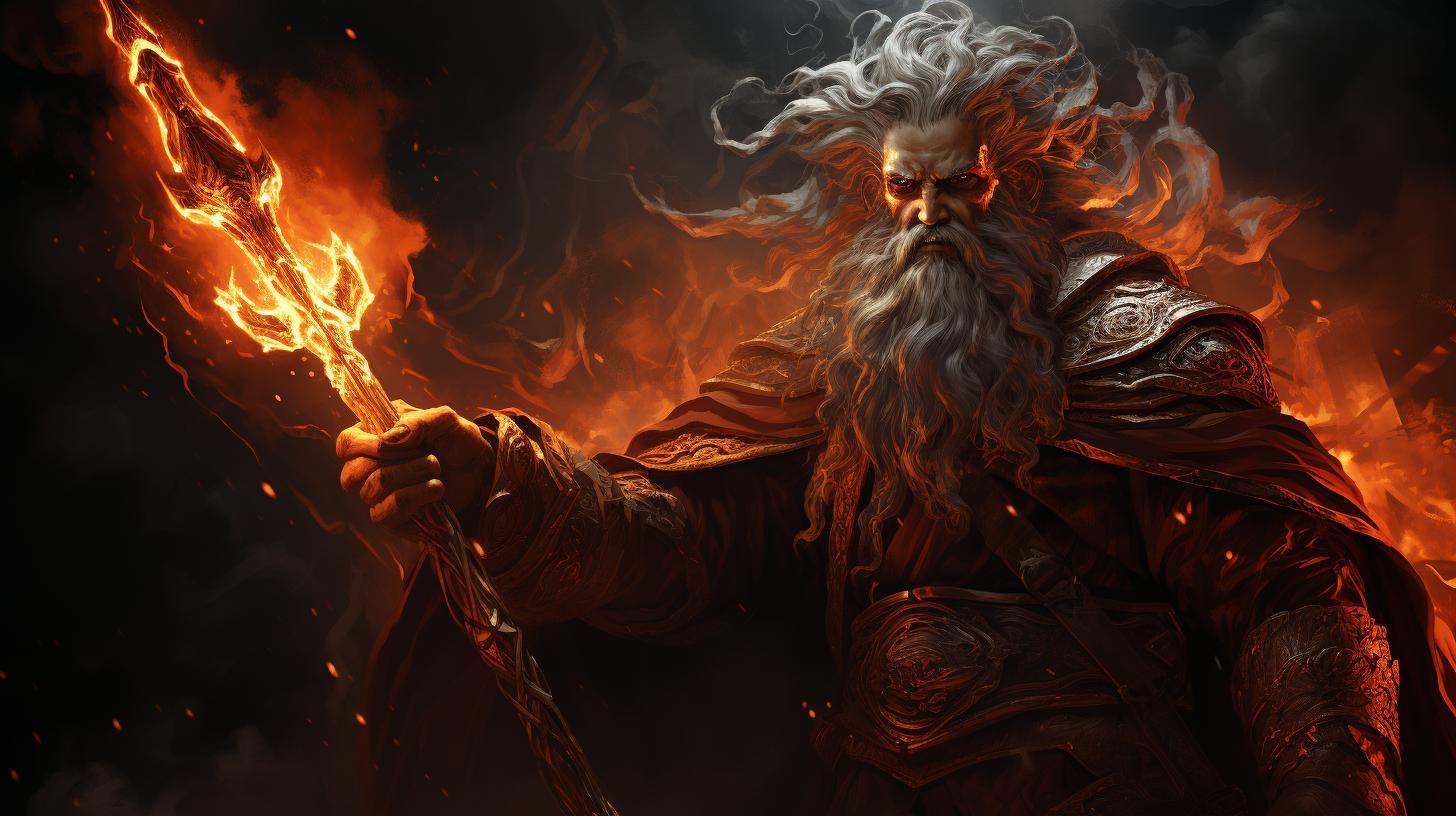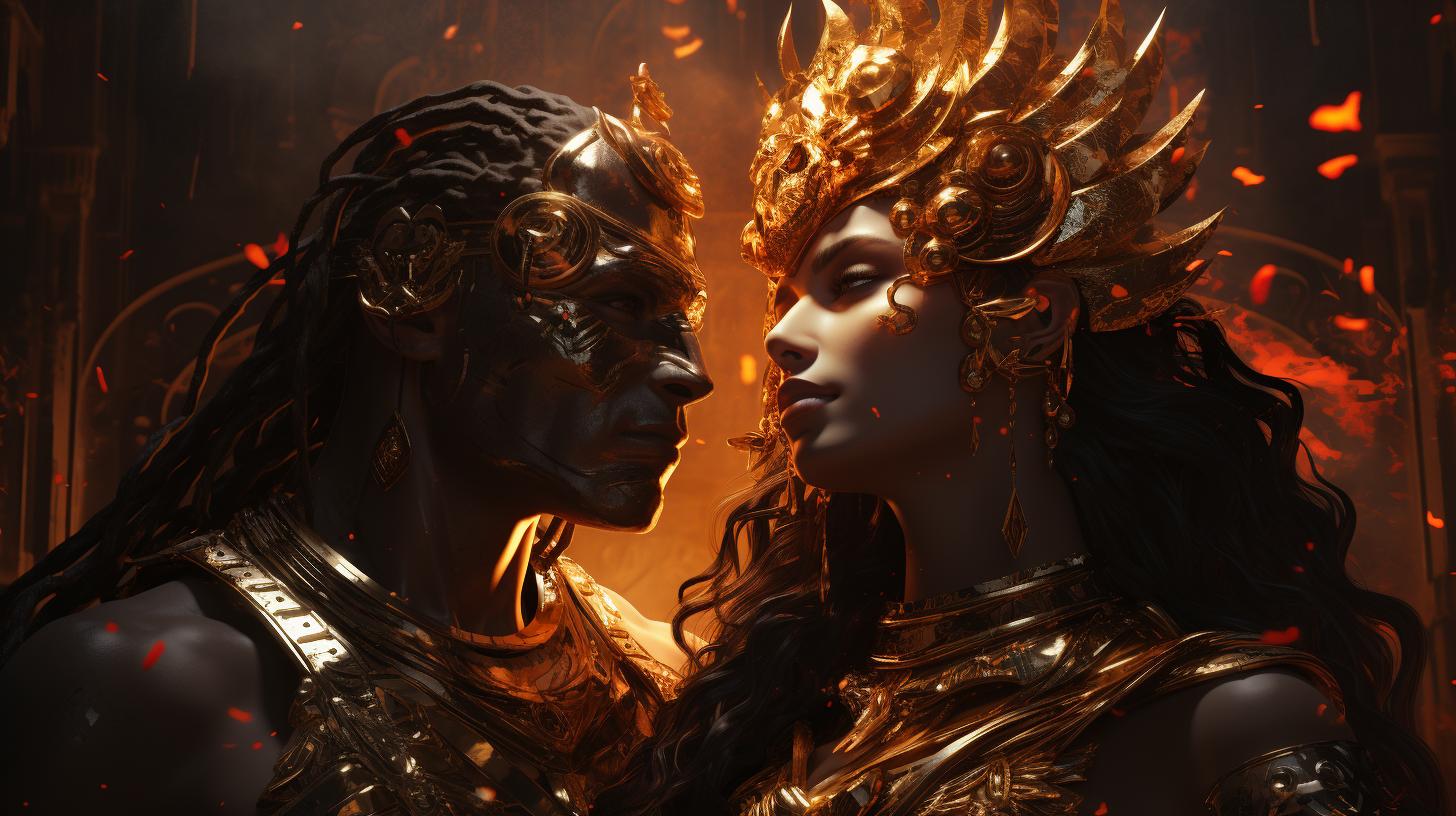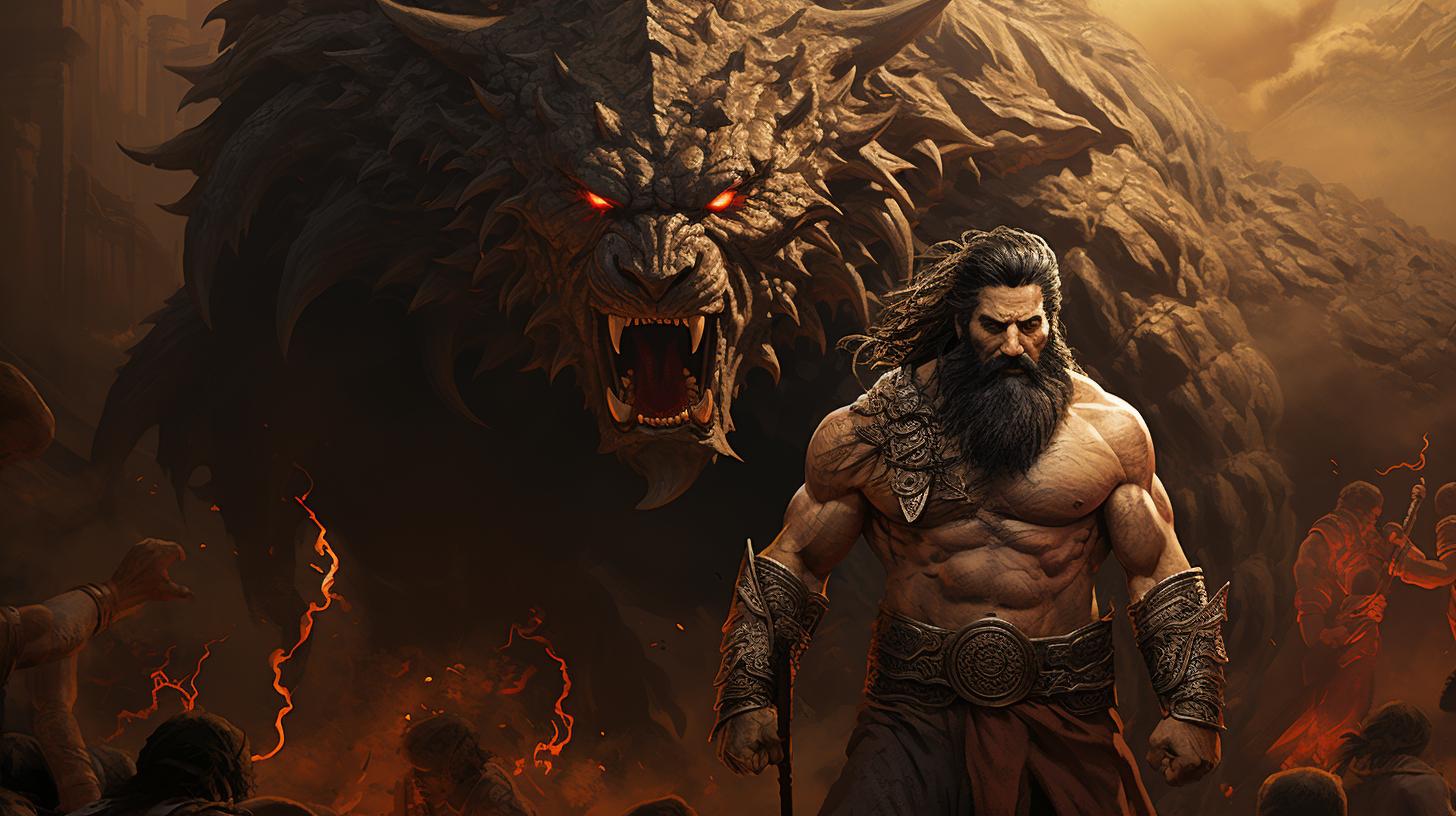Namtar God: Unveiling the Mysterious Deity of Death in Ancient Sumerian Mythology
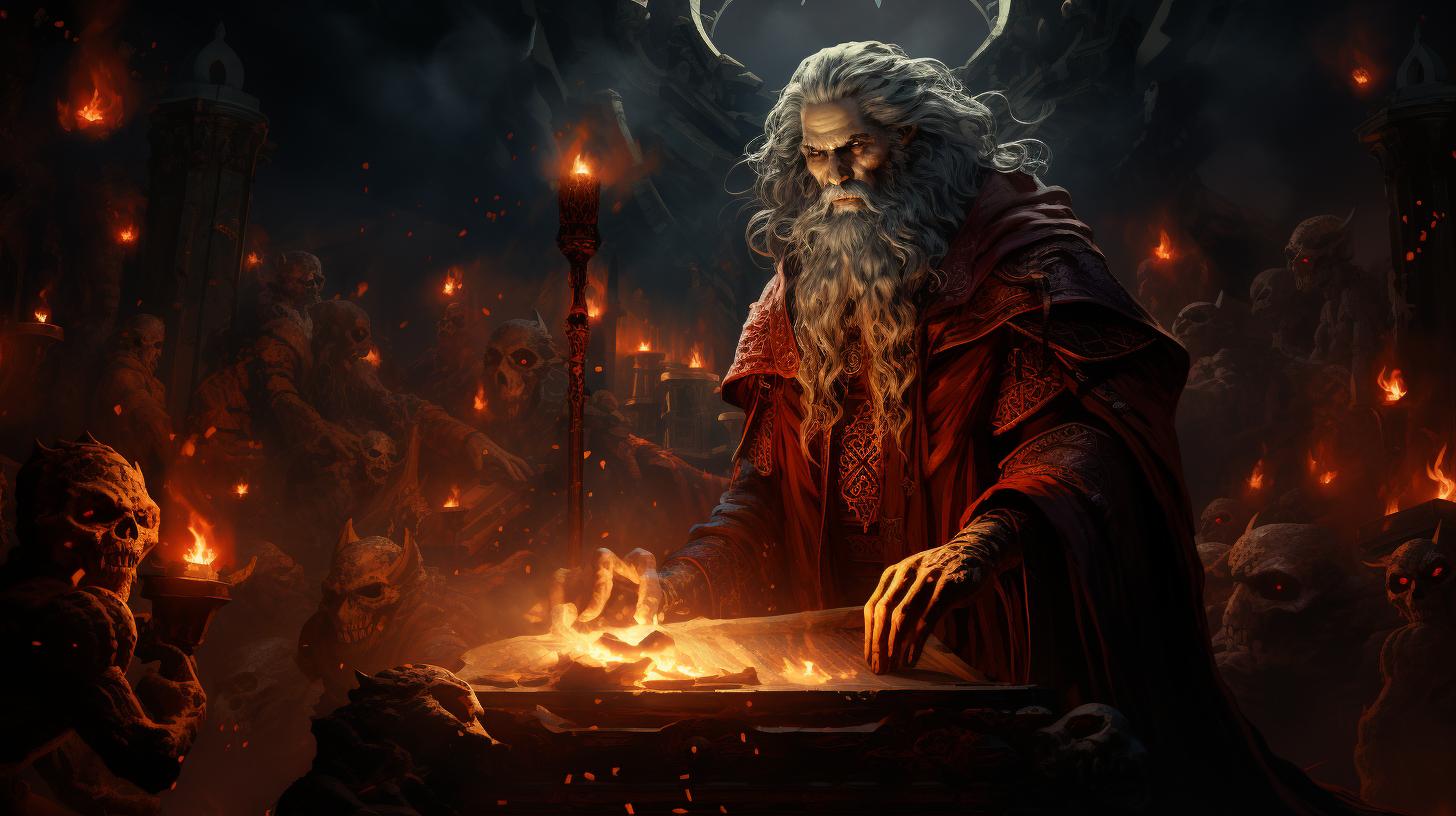
Namtar god, a prominent deity of death in ancient Sumerian mythology, holds a significant role within the pantheon of gods. As the offspring of Enlil and Asherah, Namtar possesses extraordinary abilities, including the foresight of death and interdimensional travel.
Connected to the underworld through his servitude to Ereshkigal, Namtar is also attributed with the power to send diseases and epidemics. His interactions with other gods and deities, such as Inanna, Eriskegal, Baal, and Anath, further establish his importance within Sumerian mythology.
This article explores the various aspects of Namtar’s existence and influence.
Namtar god: Exploring the Deity of Death in Sumerian Mythology
Origins and Family of Namtar
Namtar, a significant figure in Sumerian mythology, is deeply rooted in the ancient traditions surrounding death. As the son of Enlil and Asherah, Namtar possesses a lineage that connects him to prestigious divine heritage.
His celestial family includes numerous siblings, aunts, uncles, and cousins, solidifying his status among the formidable Anunnaki gods worshipped by the ancient Sumerians. With his birth traced to Nippur in Sumeria, Namtar’s origins provide a glimpse into his intriguing existence.
Namtar’s Role in Sumerian Mythology
Within the elaborate tapestry of Sumerian mythology, Namtar plays a vital role as the visier and advisor to Ereshkigal – the goddess of the dead and the ruler of Allatum, the extradimensional realm designated for worshippers’ spirits.
Engaging in an array of events involving other deities such as Inanna, Ereshkigal, Baal, and Anath, Namtar’s actions and interactions contribute to the complex dynamics of the Sumerian pantheon.
His abilities to perceive impending death, traverse dimensions, and assume different forms set him apart as a formidable being with tremendous power.
Namtar and the Underworld: His Connection with Ereshkigal
Namtar, the deity closely associated with death in Sumerian mythology, has a significant connection to the underworld through his service to Ereshkigal. Ereshkigal, herself a powerful goddess of the underworld, relies on Namtar as her loyal servant and advisor.
In their symbiotic relationship, Namtar acts as Ereshkigal’s conduit, bridging the gap between the mortal realm and the realm of the dead. His role involves facilitating the transition of souls and overseeing the administration of Allatum, the extradimensional realm reserved for the spirits of the worshippers.
Namtar’s association with Ereshkigal grants him immense authority within the realm of death.
Ereshkigal holds the power to release the souls of the possessed from their suffering on Earth through a ceremonial magic.
Namtar, as her son and servant, carries out these rituals, ensuring the spiritual liberation of the afflicted. This particular connection between Namtar and Ereshkigal highlights his role as a conduit for both the living and the dead.
While Ereshkigal commands the underworld, Namtar’s role as her loyal servant solidifies his involvement in the intricate workings of the afterlife. Together, they play a crucial role in maintaining the delicate balance between the realms of life and death.
Namtar’s connection with Ereshkigal not only emphasizes the interconnectedness of the deities within the Sumerian pantheon but also highlights the significance of his role in the divine order of the afterlife.
Namtar’s Powers and Abilities: Perception of Death and Interdimensional Travel
Namtar, the fascinating deity of death in Sumerian mythology, possesses a range of extraordinary powers and abilities. One of his most notable capabilities is his uncanny perception of death, allowing him to foretell its arrival before it occurs.
This unique perception grants Namtar a profound understanding of the existential boundary that humanity faces, making him a revered figure within Sumerian culture.
Furthermore, Namtar possesses the exceptional ability to traverse between dimensions, easily moving between the earthly realm and various extradimensional planes.
His interdimensional travel hints at his divine origins as a member of the Anunnaki, a pantheon of extradimensional beings revered as gods by the ancient Sumerians. Namtar’s capacity to navigate different realms reinforces his powerful status and highlights the depth of his influence.
It is said that Namtar can assume different forms during his interdimensional journeys, adapting to the diverse realms he encounters. This shape-shifting ability enables him to interact with other deities and entities, fostering alliances or carrying out tasks as needed.
The vast range of forms that Namtar can assume adds to the enigmatic nature of his character and exemplifies the depth of his power.
Moreover, Namtar’s dominion extends beyond mere perception and interdimensional travel.
He is also believed to possess control over certain demonic forces, further enhancing his capability to influence and shape the realm of death and disease. Though the specifics of this control remain shrouded in mystery, it is clear that Namtar wields considerable power over these dark entities.
Within his role as the visir and advisor of Ereshkigal, the goddess of the underworld, Namtar’s powers and abilities find particular significance. His connection to Ereshkigal amplifies his authority over matters related to death, establishing him as a pivotal figure in the understanding and navigation of the afterlife within Sumerian mythology.
In conclusion, Namtar’s powers and abilities transcend the ordinary, allowing him to perceive the impending arrival of death, travel between dimensions, assume different forms, and exert control over demonic forces. These remarkable attributes highlight the extraordinary nature of his divine existence and reaffirm his crucial role within Sumerian mythology.
The Role of Namtar in Sending Diseases and Epidemics
Namtar, the formidable deity of death in Sumerian mythology, possesses a significant role as the purveyor of diseases and epidemics. According to ancient beliefs, Namtar is responsible for inflicting sixty different diseases upon humans, each in the form of malevolent demons targeting various parts of the body.
These diseases are considered to be a consequence of Namtar’s influence, as he wields the power to spread illness and suffering among mortals. The belief in his ability to enforce such afflictions underscores his immense authority within the pantheon of gods.
Legends describe how humans resorted to making sacrifices and offerings to appease Namtar and avoid his detrimental influence. These acts of worship and offerings were seen as a way to prevent or mitigate the onslaught of diseases and epidemics that Namtar unleashed upon humanity.
However, an intriguing twist manifests as Atrahasis, a wise sage guided by Enki, manages to convince humans to revere and make offerings to Namtar. This unexpected display of love and devotion from mankind causes Namtar to feel a deep sense of shame, leading to a change in his behavior towards those who demonstrate utmost affection for him.
The intricate relationship between Namtar and diseases highlights the intertwined nature of life and death. His capacity to unleash diseases and inflict suffering underscores the fragility of human existence and the vulnerability to forces beyond mortal control.
In the ancient Sumerian worldview, Namtar’s role in sending diseases and epidemics serves as a reminder of the transient nature of life, the need to appreciate good health, and the necessity to honor the divine forces that govern the balance between life and death.
Namtar’s Interaction with Other Gods and Deities
Within Sumerian mythology, Namtar, the god of death, often finds himself entangled in intriguing events involving various gods and deities. His presence and influence extend beyond the realm of death, as he navigates the intricate connections between the divine beings of ancient Mesopotamia.
One notable interaction involves Inanna, the goddess of love and fertility. In a daring quest to conquer the underworld, Inanna seeks the assistance of Namtar. As they traverse the treacherous realms between the living and the dead, Namtar plays a crucial role in ensuring Inanna’s safe journey and return.
This collaboration highlights Namtar’s significant involvement in the affairs of both the mortal and divine realms.
Furthermore, Namtar’s connection with Eriskegal, the goddess of the dead and ruler of Allatum, solidifies his importance as her loyal visier and advisor.
Their partnership showcases Namtar’s loyalty and understanding of the intricate workings of the underworld. Namtar’s ability to navigate the complexities of the afterlife ensures smooth governance and balance in the realm of the deceased.
Additionally, Namtar’s interactions extend to other deities such as Baal and Anath. In alliances and conflicts, Namtar’s wisdom and cunning prove invaluable, making him a respected figure among the pantheon of gods.
His actions and decisions contribute to shaping the mythological landscape of ancient Mesopotamia.
This web of interactions between Namtar and various gods and deities underscores his multi-dimensional role within Sumerian mythology.
He serves as a bridge, connecting different realms and facilitating divine undertakings. Namtar’s presence adds depth and complexity to the intricate tapestry of Mesopotamian cosmology.
Worship and Offerings to Namtar
Worship of Namtar was a crucial aspect of ancient Sumerian culture, as he held immense power over life and death. The Sumerians believed that by appeasing Namtar, they could avoid the infliction of diseases and epidemics that he was known to unleash.
Devotees would gather in temples dedicated to Namtar, offering various rituals and sacrifices to gain his favor. These offerings ranged from simple prayers and incense to more elaborate ceremonies involving animal sacrifices.
- To demonstrate their reverence, worshippers would present flowers, fruits, and other symbolic items at the altars of Namtar.
- Animals such as goats, sheep, and cattle were sacrificed to appease Namtar and ward off his malevolent influence.
- Additionally, devotees would perform intricate rituals, including chanting hymns and performing dances, as a way to honor Namtar’s divine presence.
It was believed that by displaying unwavering devotion and offering sacrifices, individuals could gain Namtar’s protection and safeguard themselves and their communities from the devastating effects of his diseases.
The rituals and offerings made to Namtar were not only acts of worship but also a form of seeking redemption. By offering their devotion, the Sumerians hoped to show Namtar their love and affection, thus eliciting his mercy and sparing them from his destructive influence.
Throughout the year, specific festivals and ceremonies were dedicated to Namtar. These events brought people together to engage in collective worship, reinforcing the belief that communal devotion was essential in combating the potential wrath of the god of death.
The influence of Namtar in Sumerian society was profound, as his worshippers sought solace and protection from the perils associated with his powers. Offering prayers, sacrifices, and participating in ceremonial rites were integral components of expressing their piety towards Namtar.
As time passed, the rituals and practices surrounding Namtar’s worship evolved, reflecting the changing beliefs and cultural dynamics of the ancient Sumerians. Nevertheless, the reverence for Namtar persisted, as his role as a harbinger of death continued to shape the worldview of those who sought his benevolence.











